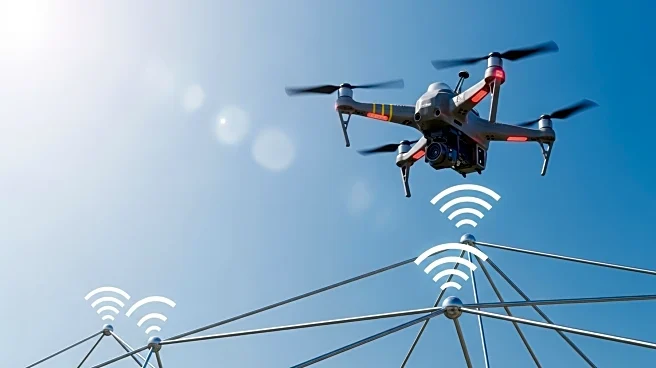What's Happening?
Researchers at the King Abdullah University of Science and Technology (KAUST) are pioneering the development of 6G wireless networks that will incorporate aerial platforms such as drones, airships, and satellites as base stations. This innovative approach is expected to be implemented in the early 2030s, marking a significant shift in telecommunications infrastructure. The integration of these aerospace platforms aims to enhance network coverage and reliability by utilizing the atmosphere, stratosphere, and orbit as operational zones for these base stations.
Why It's Important?
The introduction of aerial base stations in 6G networks represents a transformative step in wireless communication, potentially offering improved connectivity and coverage, especially in remote or underserved areas. This development could significantly impact various sectors, including telecommunications, internet services, and global connectivity, by providing more robust and reliable network solutions. The strategic use of aerospace platforms may also drive advancements in related technologies and industries, fostering innovation and economic growth.
What's Next?
As the research and development of 6G networks progress, stakeholders in the telecommunications industry, including companies and regulatory bodies, will likely engage in discussions and collaborations to address technical, regulatory, and logistical challenges. The deployment of these networks will require substantial investment and infrastructure development, potentially leading to new partnerships and business models. The anticipated rollout in the early 2030s will necessitate ongoing innovation and adaptation to meet evolving communication needs.












